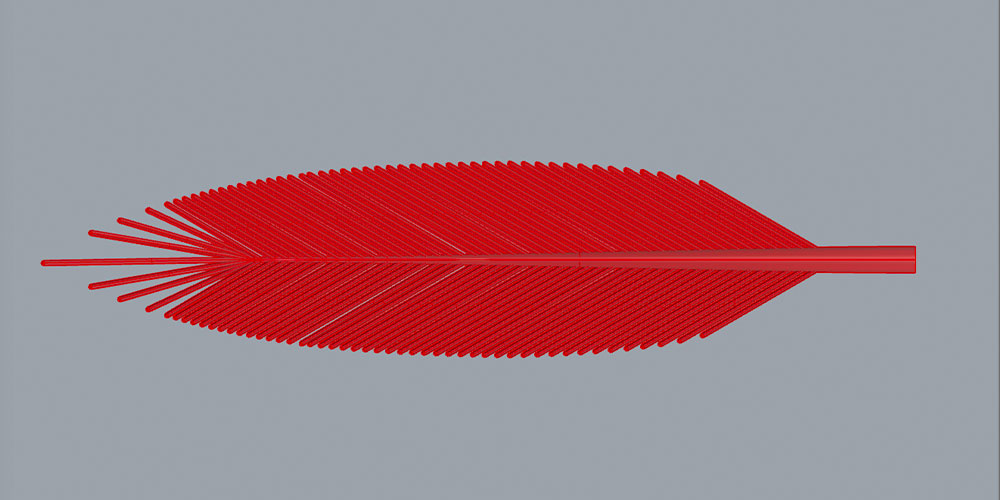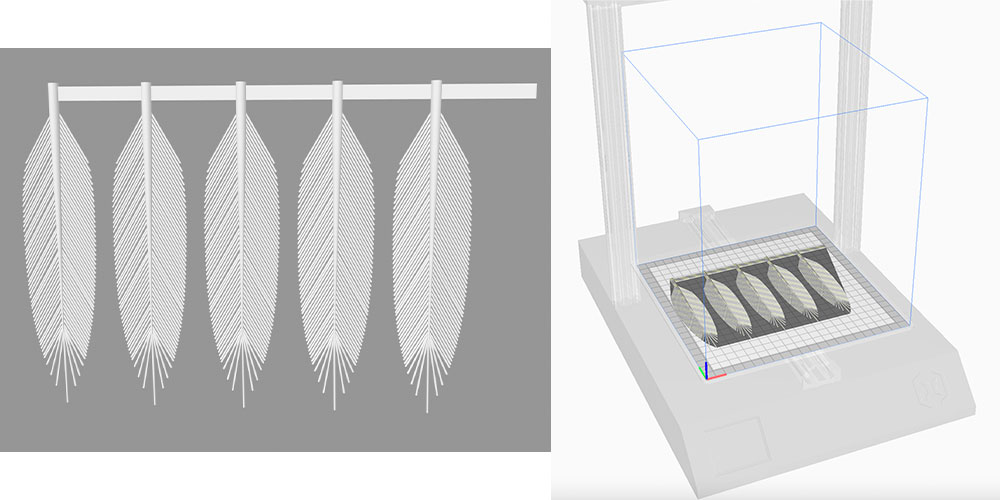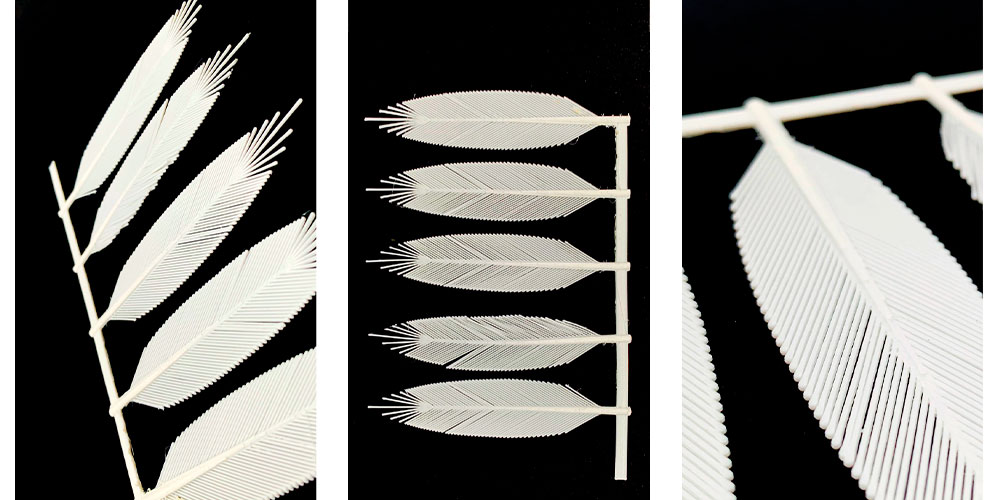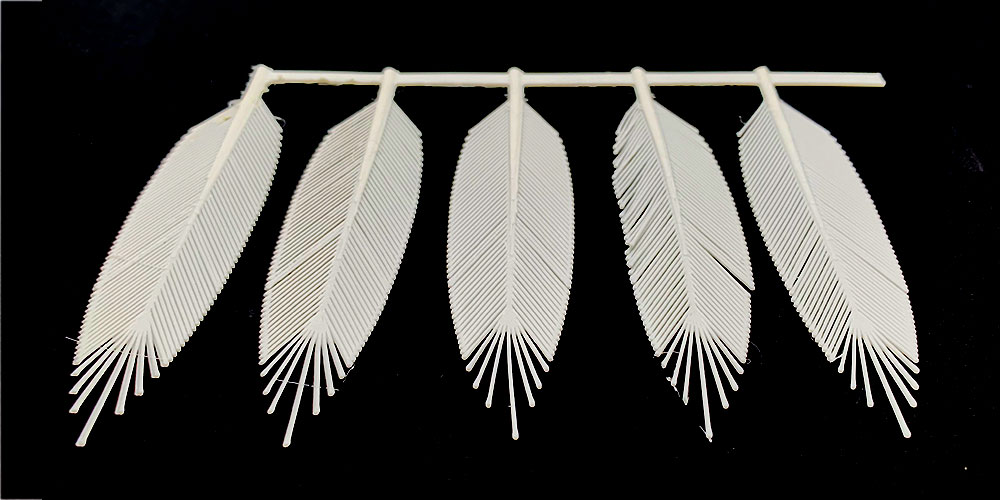Experiment 05; Feathers Line¶
Let's start with the mass production!
Through this journey, in the experimentation process, my third experiment was to 3D printing feathers with flexible TPU filament, this one was my favorite because it gives me great results. The prototypes are flexible, resistant, light and delicate. That’s why i decided to use this process to develop my main prototype.
To help myself with the post printing process, i decide to create a base module of five feathers that can be sewed with a few stitches. The main material that I use for modules of my garment is a biodegradable flexible filament made out of cornstarch.
Base Module¶

Feather's fringe, the most common way to find animal feathers in the fashion industry
Based on one of the many ways that we can find feathers in the market, i decided to create my base module using Feather's fringes as reference. First of all, i have to decide what type of feather i want to use for my main prototype.

The idea is to create a garment that emulates goose's plumage, so the feather must have a perpendicular fall, which can be superimposed one module on another to generate the illusion of a complete plumage.
To make the postprinting process faster to sew, i develope this module of 5 feathers attached to a line and separated at the same distance from each other, so that we can print on the trays of the printers we have in the laboratory.

On the other hand I also developed a file with a longer line of feathers, which I can use to print on large trays and which will also save me time when sewing the feathers to the suit.

Most of the feather that i printed where the 5 feather's module, because the big printers doesn't keep the resolution that i needed for the feather to be perfect. I personally recommend a direct extrusion printer, cause it prevents that the machine gets stuck with the flexible filament and it's faster than the traditional one.

Final Results¶


Thank for reading! :)